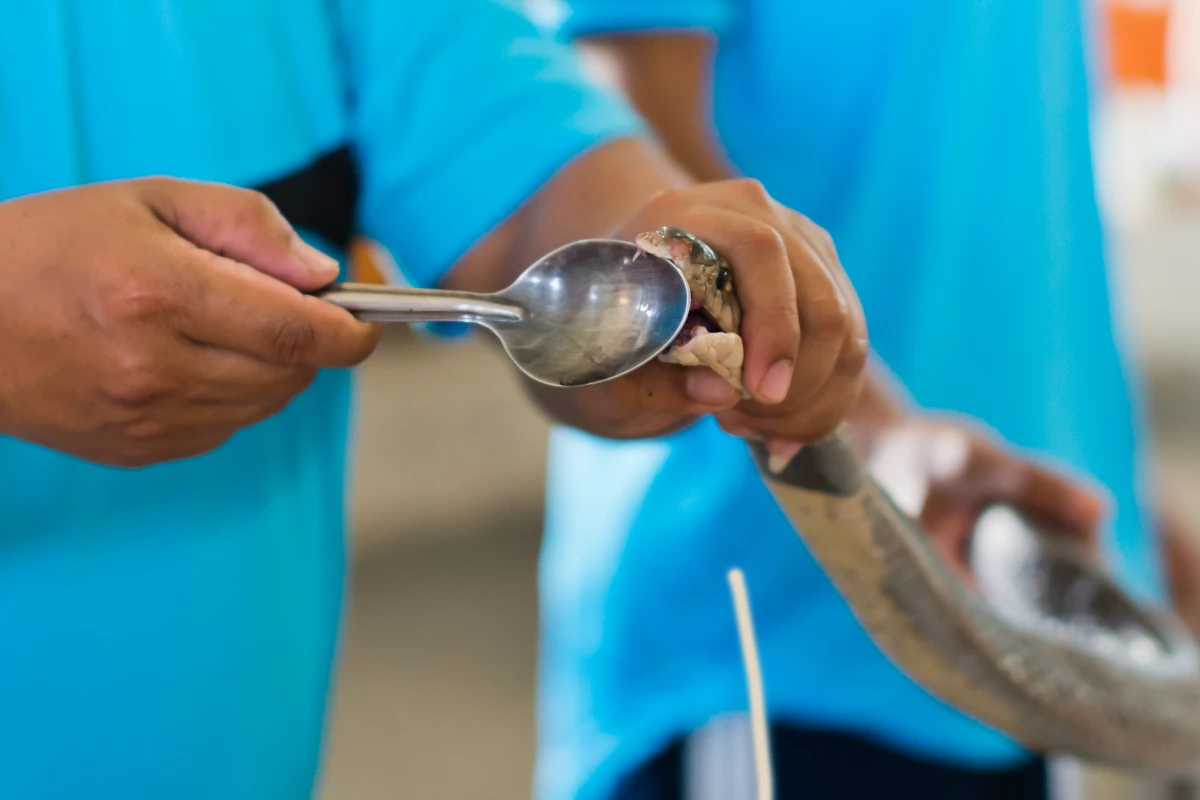While snakebite antivenom is certainly a lifesaver, it's also expensive, time-consuming to produce, and must be administered by trained clinicians. A new low-cost type of antivenom, however, could conceivably be self-applied right away, on the spot.
Traditionally, antivenom is produced by first "milking" venom from the fangs of captive snakes, then injecting small amounts of that venom into animals such as horses. Those creatures respond by producing venom-neutralizing antibodies which are harvested from their blood, purified, then used in the antivenom.
This can be quite a lengthy process, plus the workers who extract the venom run a risk of getting bitten by the snakes. Additionally, the antivenom must be administered intravenously, typically in a hospital or clinic.
Unfortunately, a large percentage of snakebites occur in remotely located agricultural settings, in developing nations where healthcare facilities may be few and far between. What's more, specific antivenoms are usually required for bites from specific types of snakes.
Led by Assoc. Prof. Brian Lohse, scientists at the University of Copenhagen have instead turned to an easily produced peptide. This particular one binds with and neutralizes a lethal toxin which is the "active ingredient" in the venom of approximately 75 percent of all venomous snakes. In vitro lab tests have already shown it to be effective against quick-acting cobra venom, but it may also work on many other types.
"If it becomes a future product, it will fit in your pocket, and it can be used by anyone, anywhere," says Lohse. "The idea is that it can be injected using an automatic injection unit, precisely like the ones used by diabetes patients, that is, directly into the muscle or fold of the skin at the site of the bite."
The peptide-based antivenom is now being commercialized by U Copenhagen spinoff company Serpentides. A paper on the research – which also involves scientists from the Technical University of Denmark and the University of Münster – was recently published in the Journal of Medicinal Chemistry.
Source: University of Copenhagen




